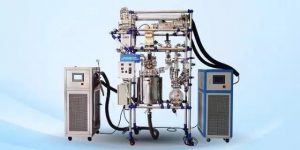Common Faults and Cause Analysis of Air Cooled Chiller
During the use of air-cooled chiller equipment, it is inevitable to encounter some common faults. Users need to understand the possible causes of faults and make corresponding solutions in time, so as to make the production and operation more stable. So, what are the common faults of air-cooled chillers?

1. The inlet and outlet water temperature difference is small
When users encounter a small difference in inlet and outlet water temperature when using air-cooled chillers, the general reasons are as follows.
First, the output cooling capacity of the chiller is small, such as the equipment itself is faulty or not fully loaded. We suggest that in these cases, the user can make a preliminary judgment by observing the operating current and other parameters of the chiller.
Second, the heat transfer effect of the equipment is not good. For example, the scaling of the heat transfer pipe is serious, which affects the heat exchange of the chiller. Users can judge by observing the heat transfer temperature difference between the water temperature and the evaporation temperature.
Third, the water flow is too large. Users can judge by observing the inlet and outlet water pressure difference of the evaporator and the running current of the water pump. In addition, if the above problems are eliminated, the user can check whether the sensor or thermometer is accurate.
2. Communication failure
It is understood that the computer controller controls each module through the communication line and the general interface board. The main cause of communication failure is poor contact or open circuit of the communication line, especially poor contact caused by damp and oxidation of the interface. In addition, failure of unit electronic board or general interface board, improper selection of address dial switch and power failure can cause communication failure.
3. High voltage fault
When the discharge pressure of the compressor is too high, it is easy to cause the action of the high-voltage protection relay. If the pressure is too high for a long time, it will lead to excessive operating current of the compressor, easy to burn the motor, and easy to damage the valve plate at the exhaust port of the compressor.
So, under what circumstances will high voltage fault occur? It mainly includes: high cooling water temperature and poor condensation effect. The cooling water flow is insufficient to reach the rated water flow. Condenser fouling or blockage. Excessive refrigerant charge. The refrigerant is mixed with non condensable gases such as air and nitrogen. False alarm caused by electrical failure.
4. Low voltage fault
When the suction pressure of the compressor is too low, it will cause the low pressure protection relay to act. It is understood that the causes of low pressure failure are: insufficient refrigerant or leakage. Insufficient refrigerant water flow. Blocked evaporator and poor heat exchange. False alarm caused by electrical failure. The outside temperature is low.
In addition to understanding the above fault causes, users should also pay attention to the maintenance of the equipment after using the chiller, so as to ensure the extension of the service life and stable operation of the equipment.
Related recommendations
-
Thermal oil heating system installation and fault analysis
1919When the heat transfer oil heating system device is installed, it is necessary to pay attention to the system to avoid some faults during installation. If a fault occurs, it is necessary to understand the faults related to the heat transfer oil he...
View details -
-
Does the chip lead bonding process require a temperature control system?
1316The chip lead bonding process indeed requires precise temperature control, so temperature control systems are usually equipped to ensure process stability and yield. The following are the importance and application scenarios of temperature con...
View details -
How To Solve The Electric Vehicle Motor Test Condensation Is Too High?
1701The condensing pressure of the electric vehicle motor test will increase, the compression function will increase, the cooling capacity will decrease, the cooling coefficient will decrease, and the energy consumption will increase. The reason for t...
View details
 LNEYA Industrial Chillers Manufacturer Supplier
LNEYA Industrial Chillers Manufacturer Supplier












